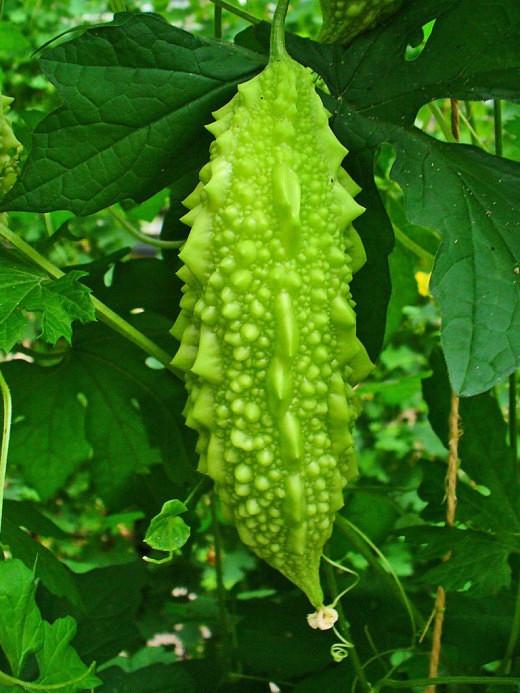660
Proteins bitter melon can fight diabetes

Traditional Chinese medicine has long used knobbly green fruit, known as bitter melon (Momordica charantia) for the treatment of diabetes.
Drawing attention to this fact, the researchers conducted a detailed study of the chemical composition of bitter lemon and found a protein that binds to insulin receptors, improving glucose uptake experimental mice suffering from diabetes. It is assumed that the observed protein may become a starting point for developing new treatments for diabetes.
Bitter melon (Momordica charantia), has long been used in folk medicine, it contains a protein that can regulate blood glucose mice.
Chien-Yun Xiang (Chien-Yun Hsiang) of China Medical University (Taiwan) decided to use the achievements of modern biotechnology to analyze the therapeutic potential and mechanism of action of traditional traditional Chinese medicine.
Previously, researchers from the group of Xiang found a sufficient amount of evidence to suggest that the proteins contained in the composition of bitter melon, interact with the insulin receptor. Typically, insulin activates the receptor, triggering a cascade of chemical signals that make fat and muscle cells are able to absorb glucose contained in the blood. Lack of insulin, as well as the lack of effectiveness of the insulin signaling system leads to the fact that the glucose remains in the blood in excess of the norm and can be dangerous - it is a sign of diabetes. Despite the fact that the present time to deal with a lot of drugs developed diabetes, insulin is the only medicine, which the mechanism of action is based on the interaction with insulin receptors.
In the new study, the researchers mapped the specific interactions between the insulin receptor and the protein of bitter melon, which was given the name of the protein M. charantia, binds to the insulin receptor [M. charantia insulin receptor-binding protein (mcIRBP)]. The first stage of the study was the interaction map is constructed by binding with the insulin receptor mcIRBP and analyzing the resulting conjugate by mass spectrometry. It has been found that insulin and mcIRBP bind to different receptor fragments, suggesting that these two substances can consistently activate the receptor. They then analyzed the muscle behavior of mice, the body which administered mcIRBP, and determined which genes are activated and which ones - are deactivated in the metabolism of glucose and lipids, which, along with the analysis of the literature data, possible to determine that mcIRBP insulin regulate similar biochemical routes <. br>
At the final stage the researchers tested the protein in mice that are unable to produce insulin on their own (the model of type 1 diabetes). The mice were administered a dose of insulin or mcIRBP, after which the mice received a large injection of glucose. Then, during 4 hours in 5 experimental rodents were measured in blood glucose. Compared with the control group who did not receive treatment, the protein mcIRBP contributed to a decrease in blood glucose by 10.8% and insulin lowered glucose at 34.7%.
Kenneth Mays (Kenneth Maiese) from the University of Wayne notes that although the protein mcIRBP three times less effective than insulin, it can take its place in the fight against disease. Investigator believes mcIRBP efficiency can be increased by dosage suggests that allow application mcIRBP reduce the need for insulin, and also can be used for patients suffering from diabetes type 2 therapy which require lower dosage of insulin injections.




Doctors believe - fruit and nuts will prevent aging
The human brain can be trained to a healthy diet
























